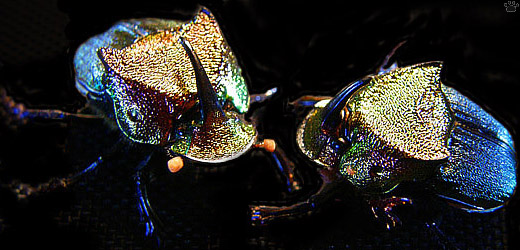
Lesser rainbow scarab (Phanaeus vindex), Coral Gables. |
Florida, part 27: Other Insects
Florida is full of insects at any time of the year, but from May to October their numbers can be overwhelming. Dipterans (flies and mosquitoes) are particularly abundant: some parts of the Everglades can have the highest density of biting insects in the world. People have died there from blood loss and mosquito saliva poisoning.
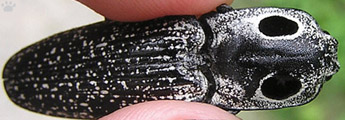
Eyed click beetle (Alaus oculatus), Highlands Hammock State Park. |

Blind click beetle (A. myops), Ocala National Forest. |
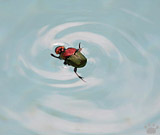
Rainbow scarab in my pool, CG. |
But most of local insects are harmless, and many are very beautiful. I don't have to go far from home to see some of these living jewels: almost every morning, I rescue a few rainbow scarabs from the small swimming pool in front of my apartment. I have no idea why the pool attracts them. Male/female ratio is close to 1:1; there are two species. |
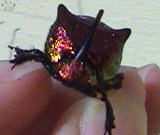
Greater rainbow scarab, CG. |
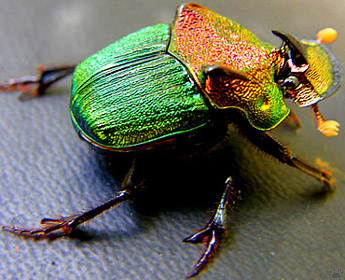 |
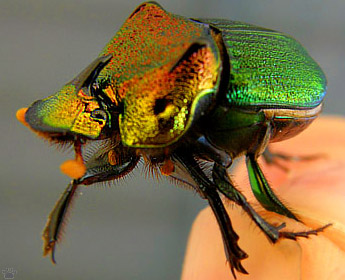 |
| Greater rainbow scarab (Ph. igneus), CG. |
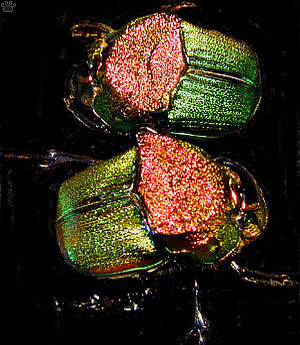
Lesser rainbow scarabs, CG. |
These little beetles are highly variable in color and shape. Their coloration also depends on the light angle: they can look green, blue, red, or golden. |

Lesser rainbow scarabs, CG. |
 |
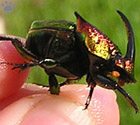 |
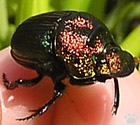 |
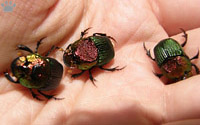 |
| Greater rainbow scarabs, CG. Female is on the third photo from the left. |

Lesser rainbow scarabs, CG. |
Rainbow scarabs do not roll the dung ball away from the dung pile. Instead, they dig a hole for it directly underneath the pile, and then lay eggs on the ball. |
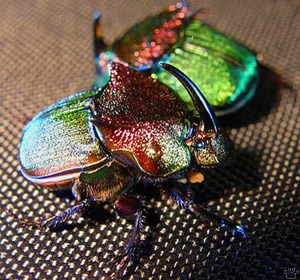
Lesser rainbow scarabs, CG. |
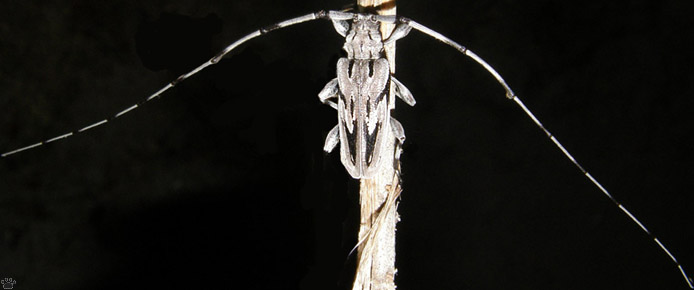
Lesser pine borer (Acanthocinus nodosus), HHSP. |
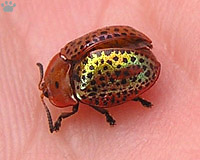
Tortoise beetle Chelymorpha cribraria,
Split Oak Forest Mitigation Park. |
I wish I could devote more time to photographing insects, especially beetles and bugs. Almost each one of them is worth a close look, especially in southern Florida, where many tropical species occur. Suburban gardens with their diversity of introduced tropical plants are sometimes as interesting as remote hammocks and prairies. |
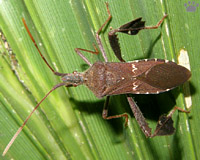
Eastern leaf-footed bug (Acanthocephala
femorata), Everglades National Park. |

Florida predatory stink bugs (Euthyrhynchus floridanus), Fisheating Creek Wildlife Management Area. |
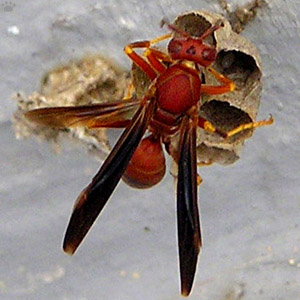
Red paper wasp (Polistes carolina), ONF. |
Social insects are usually less handsome, but they are always fun to watch. Paper wasps are ideal for that - they are very non- aggressive, and their nests are open. |
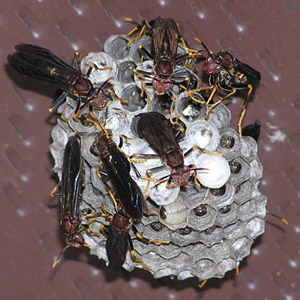
Southern paper wasps (P. annularius), Bahia Honda State Park. |
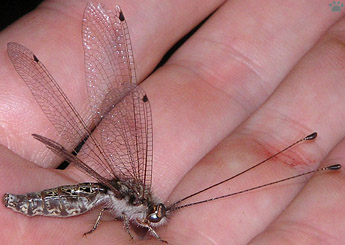
Four-spotted owlfly (Ululodes quadripunctatus), ONF. |
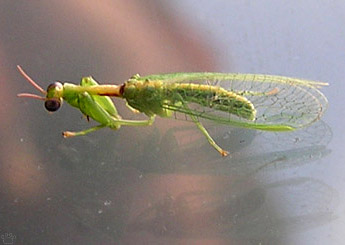
Little mantidfly (Zeugomantispa minuta), Fakahatchee Strand State Preserve. |
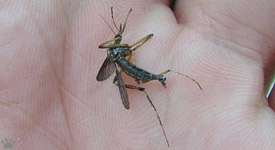
Gallnipper (Psorophora ciliata), Lake Okeechobee. |
Wonders of our insect world include world's largest bloodsucking mosquito (left) and flightless solitary wasps with very painful bites (right). |
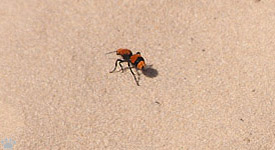
Cow killer (Dasymutilla occidentalis), Archbold Biological Station. |
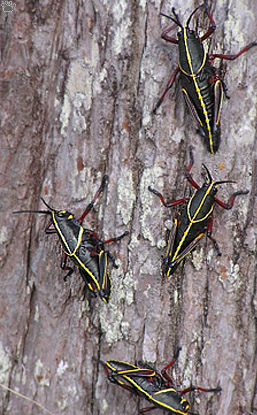 |
 |
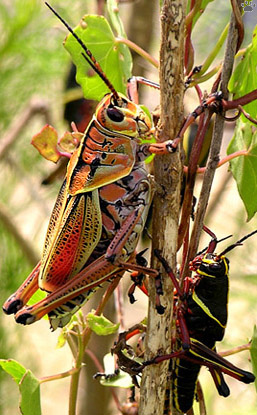 |
| Eastern lubber grasshoppers (Romalea microptera), ENP. |
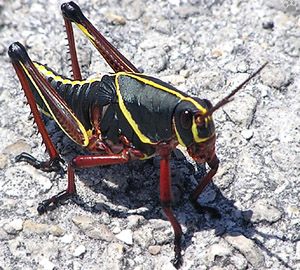
Eastern lubber grasshopper, ENP. |
Lubber grasshopper is the largest in Florida. Its young are social, and look very difficult from adults. This flightless insect is very common in late summer. |
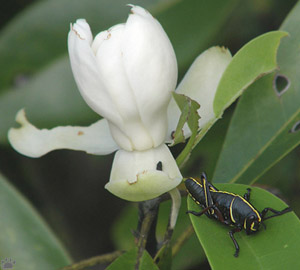
Eastern lubber grasshopper and sweetbay (Magnolia virginiana), ENP. |
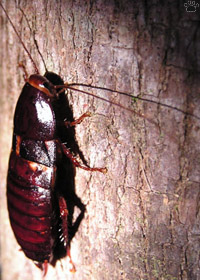
Juvenile Australian cockroach (Periplaneta
australasiae), ENP. |
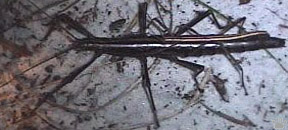
Two-striped walkingsticks (Anisomorpha buprestoides) - female forever connected with a dwarf male, ENP. |
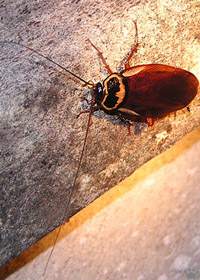
Adult australian cockroach,
ENP. |
| There are many species of cockroaches in Florida. Two large introduced species are particularly common: Australian cockroach (originally from Asia) in tropical forests, and American cockroach (P. americana, originally from Africa) - in cities. Both were introduced by slave ships a long time ago. |
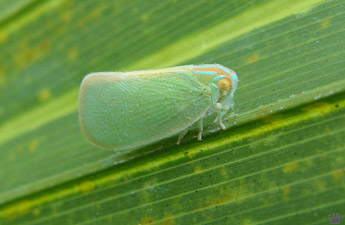
Rufous-faced leafhopper (Ormenaria rufifascia), ENP. |
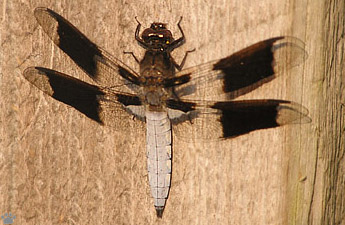
Common whitetail (Libellula lydia), Jay B. Starkey Wilderness Park. |
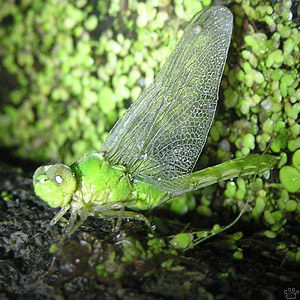
Common green darner (Anax junius), Caladesi Island State Park. |
Thanks to its extensive wetlands, Florida is a great place for watching dragonflies and damselflies. |

Ebony jewelwing (Calopteryx maculata), female, FCWMA. |
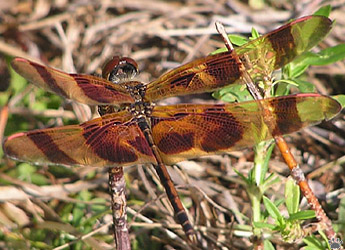
Halloween pennanta (Celithemis eponina), ONF. |
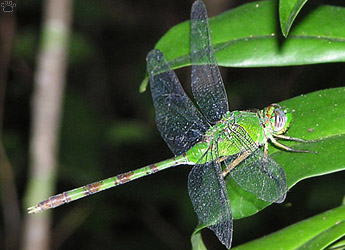
Great pondhawk (Erythemis vesiculosa), FSSP. |
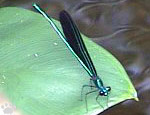
Ebony jewelwing, male, ENP. |
There is over 164 species in the state, and you can routinely see 15-25 on a day trip to the Everglades. In late summer and fall, you can sometimes see spectacular flights of millions of dragonflies over the marshes of the northern Everglades and Lake Okeechobee. |
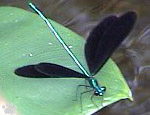
Ebony jewelwing, male, ENP. |
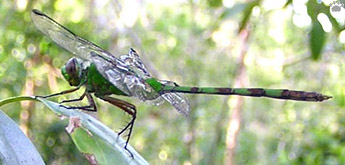
Great pondhawk, ENP. |
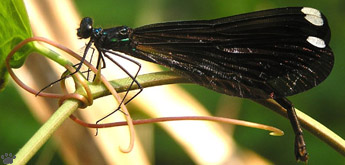
Ebony jewelwing, female, FCWMA. |
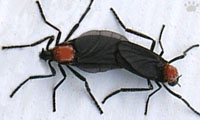
Love bugs (Plecia nearctica), Lake Okeechobee. |
The most impressive of Florida's many colossal insect swarms are those of love bugs (actually large flies). They emerge in spring and fall in Central Florida, and spend much of their adult life mating. Driving through the area during that time might seriously damage your karma. |
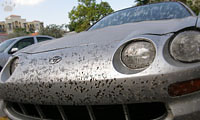
My car after driving through love bug swarm. |
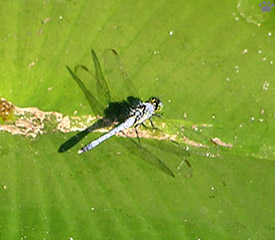
Eastern pondhawk (E. simplicicollis), ENP. |
Part 28. Spiders, lobsters and their relatives
Back to Part 26
Home
|













































